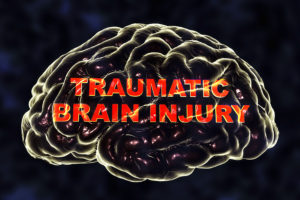Chronic Traumatic Encephalopathy (CTE) is a progressive neurodegenerative disorder that is thought to be the result of repeated concussive or subconcussive head injury. It is different from other neurodegenerative disorders in that it is characterized by perivascular accumulations of phosphorylated tau (p-tau) in neurons and astrocytes. The first confirmed case of CTE was discovered in 2005 in a former professional American football player; this sparked strong interest in this previously underrecognized condition as well as renewed scrutiny into the safety of football and other contact sports which can involve exposure to repeated head injuries. Although CTE is thought to result from long-term repeated head injury, the amount and type of head injury necessary to produce the disease are still being researched. While the medical community’s knowledge of this disease is advancing, there is still much research that the medical community is undertaking in order to better understand the nature of this neurodegenerative disease (Turk & Budson, 2019, pp. 187-207).
There are a number of potential risk factors under investigation for CTE which may contribute to the development of the disease. An important area of research here is the frequency, severity, duration, and overall exposure to head trauma, such as repeated blows to the head. CTE neuropathology has been detected in  the brains of contact sport athletes, such as football players, boxers, wrestlers, hockey players, and military service members. It is also important to note that the majority of CTE symptoms emerge years to decades after the initial head trauma. Genetics is another potential risk factor under investigation. All of these potential risk factors are active areas of research, so further progress in the knowledge of CTE is warranted in the near future to better gauge how these factors affect one’s chances of developing the illness (Turk & Budson, 2019, pp. 187-207).
the brains of contact sport athletes, such as football players, boxers, wrestlers, hockey players, and military service members. It is also important to note that the majority of CTE symptoms emerge years to decades after the initial head trauma. Genetics is another potential risk factor under investigation. All of these potential risk factors are active areas of research, so further progress in the knowledge of CTE is warranted in the near future to better gauge how these factors affect one’s chances of developing the illness (Turk & Budson, 2019, pp. 187-207).
Symptoms of chronic traumatic encephalopathy include progressive deficits to cognition, behavior, and mood as well as possible motor changes. The most common cognitive challenges from the disease involve memory and executive function; worsening attention and concentration, memory loss, speech abnormalities, and visuospatial aberrations are cognitive symptoms of CTE which can affect patients. Behavioral changes may include explosivity, impulsivity, and aggression, while adverse mood changes can involve depression, mood swings, and paranoia. The symptoms of CTE are thought to follow a pattern of phases which reflect the disease course over a period of years to decades. The first phase occurs in younger patients and is mostly behavioral/mood related, while the second phase begins later in life and includes cognitive changes. The next phase is a worsening of both behavioral and cognitive faculties, while the final phase is a form of dementia. Additional symptoms of CTE may include hopelessness, violent tendencies, suicidality, and feelings of being “out of control” (Turk & Budson, 2019, pp. 187-207).
Currently, there are no validated clinical diagnostic criteria for CTE, but research diagnostic criteria have been developed. In order for there to be a probable CTE diagnosis under these criteria, at least one TES (traumatic encephalopathy syndrome) subtype must be met, such as a behavioral/mood variant, a cognitive variant, mixed variant, or dementia. Moreover, the condition must be progressive and cannot meet diagnostic criteria for another disorder more consistently than TES. Also, there must be a minimum of one positive potential biomarker for CTE (Turk & Budson, 2019, pp. 187-207).
Regarding treatment, there are currently no medications for CTE that have been approved by the US Food and Drug Administration (FDA). As a result, treatments are prescribed based on symptoms that are present with the disease. Some medications which have been used for certain disease symptoms include acetylcholinesterase inhibitors for memory-related problems and selective serotonin reuptake inhibitors (SSRIs) for depression and anxiety. A discussion with the prescribing physician can be productive in determining the right course of symptomatic treatments for CTE (Turk & Budson, 2019, pp. 187-207).
Interested in learning more? The Premiere Research Institute in West Palm Beach regularly conducts clinical research studies in the fields of Alzheimer’s, Multiple Sclerosis, and Migraine Headaches. To find out more about these studies click here or sign up for our newsletter to keep informed about the newest treatments, articles, and research that are being conducted in these fields.
References:
Turk, K. W., & Budson, A. E. (2019). Chronic Traumatic Encephalopathy. CONTINUUM: Lifelong Learning in Neurology, 25(1), 187-207. doi:10.1212/con.0000000000000686
